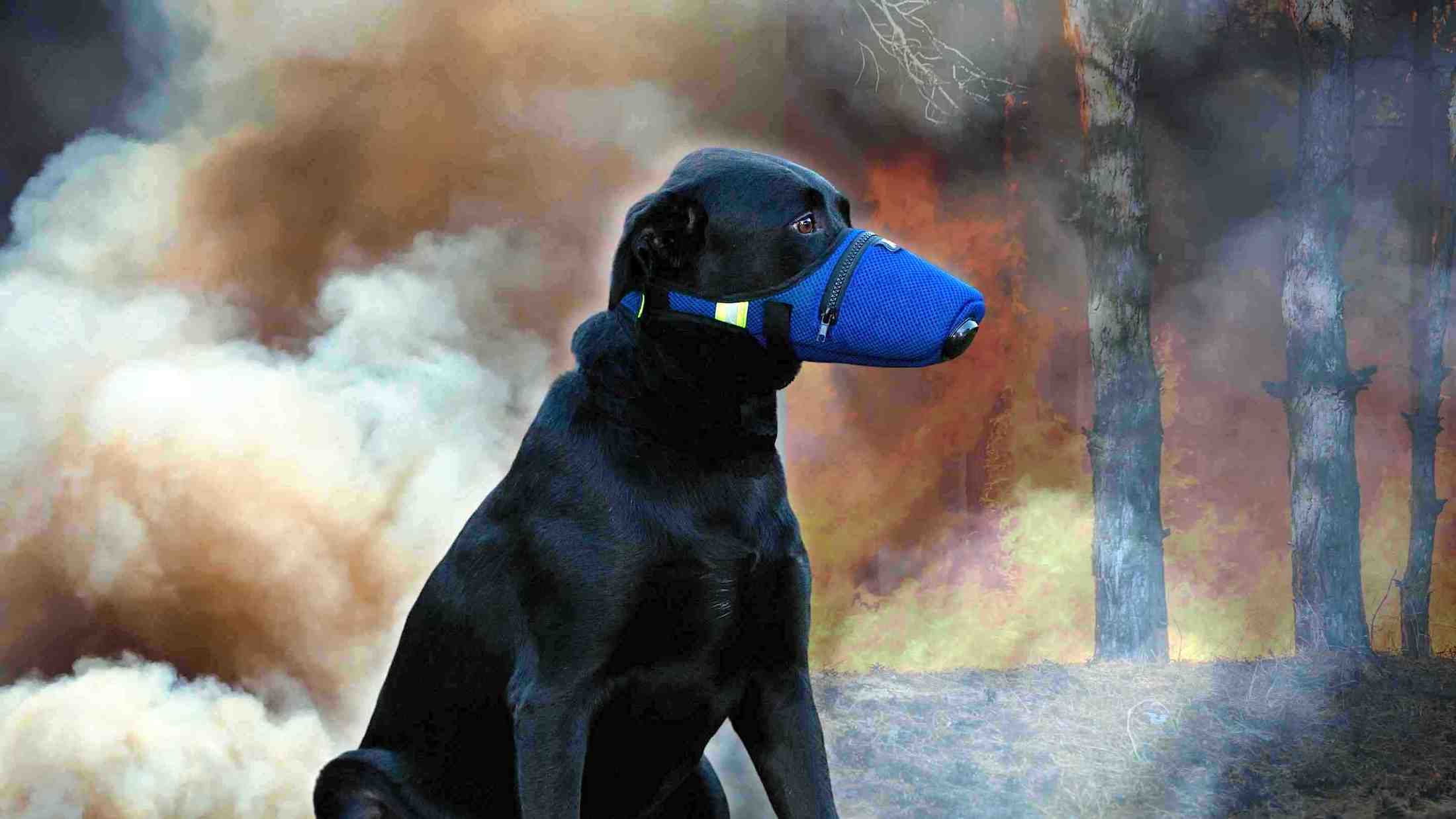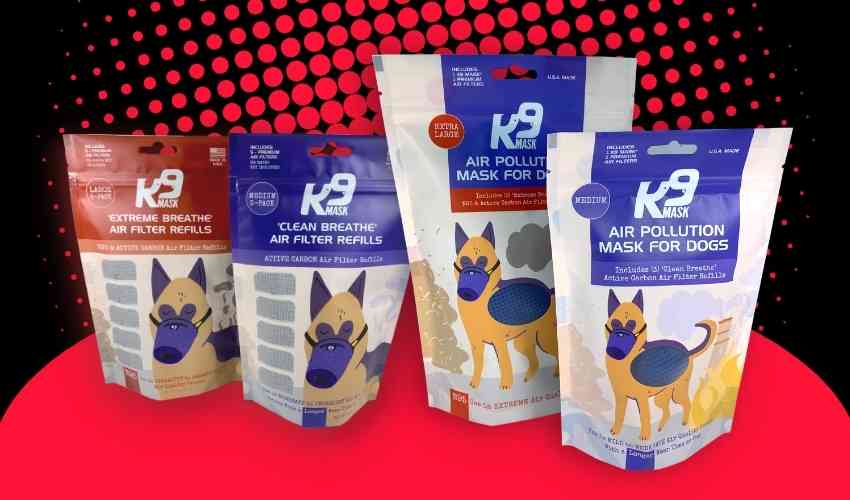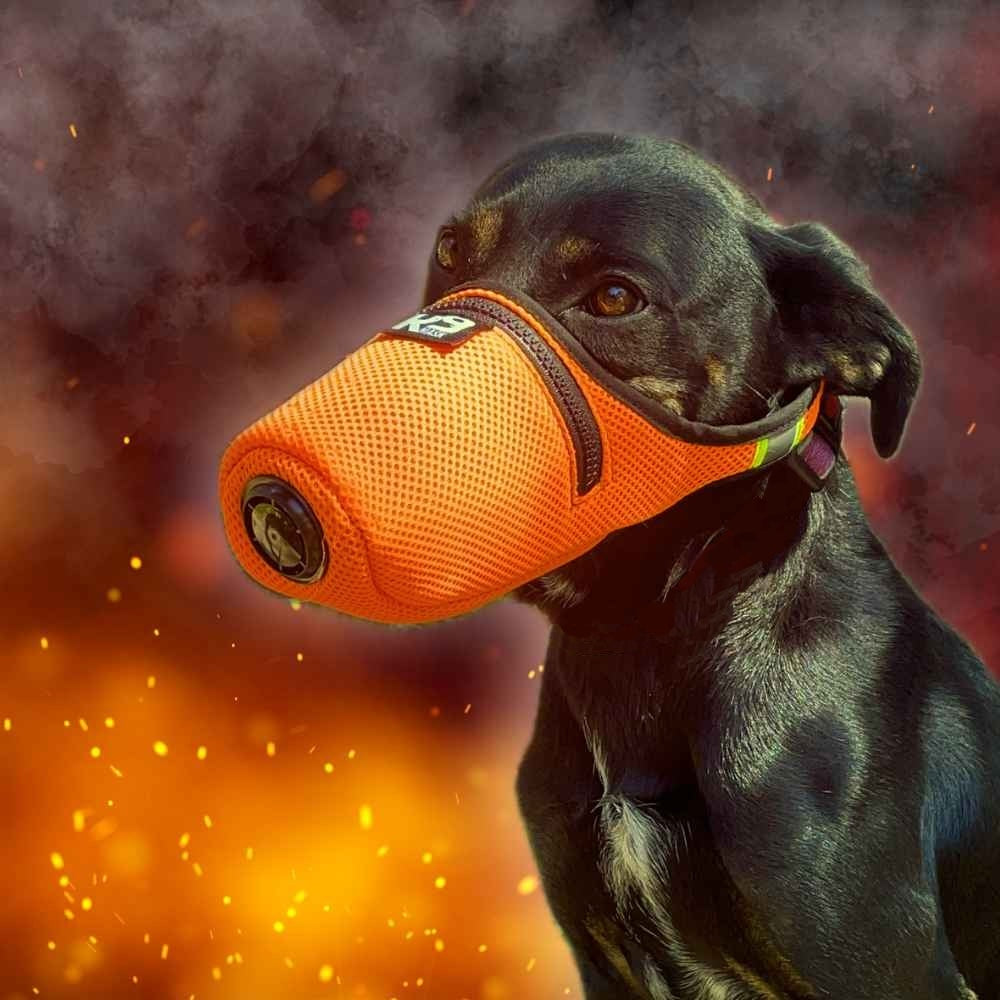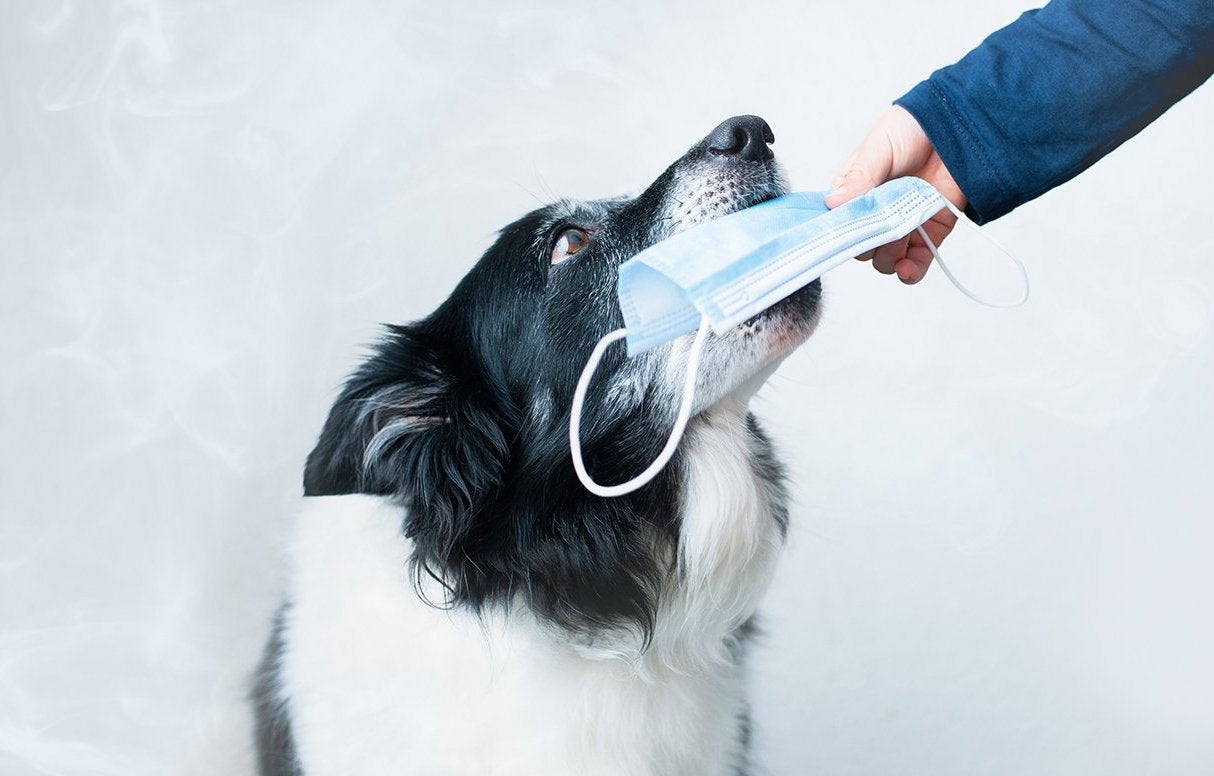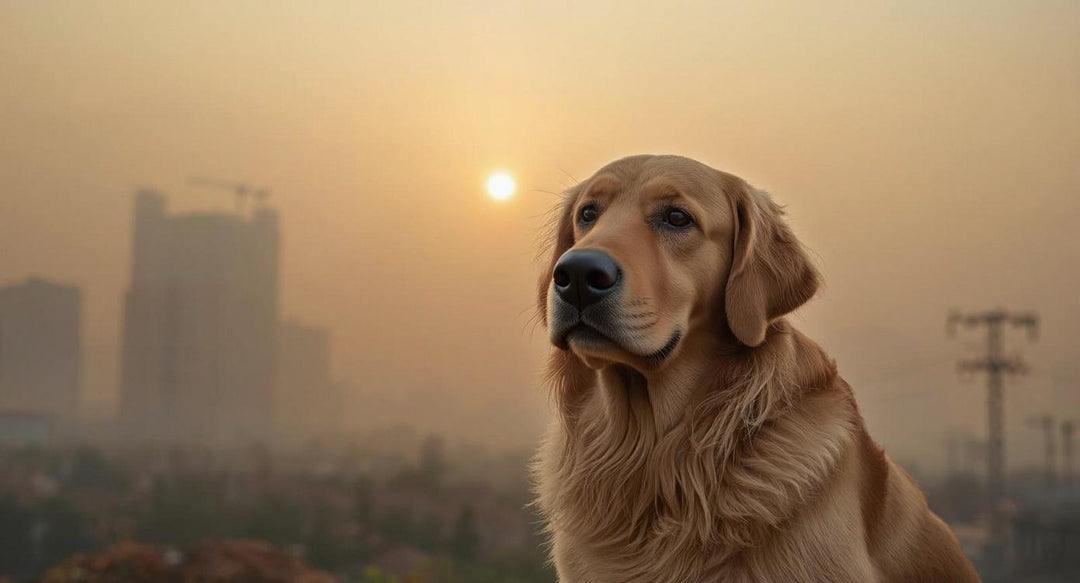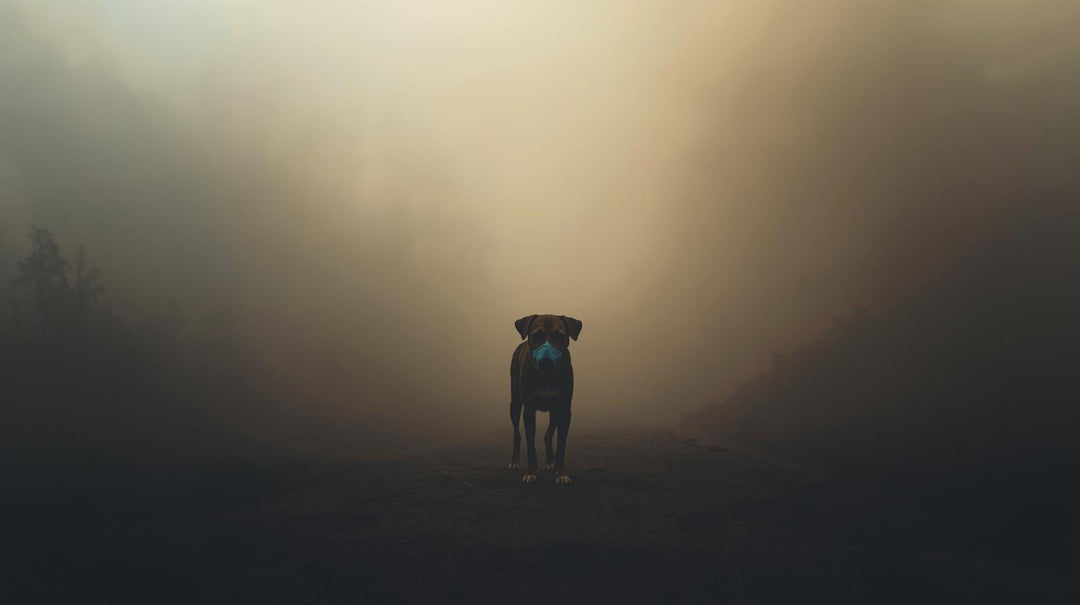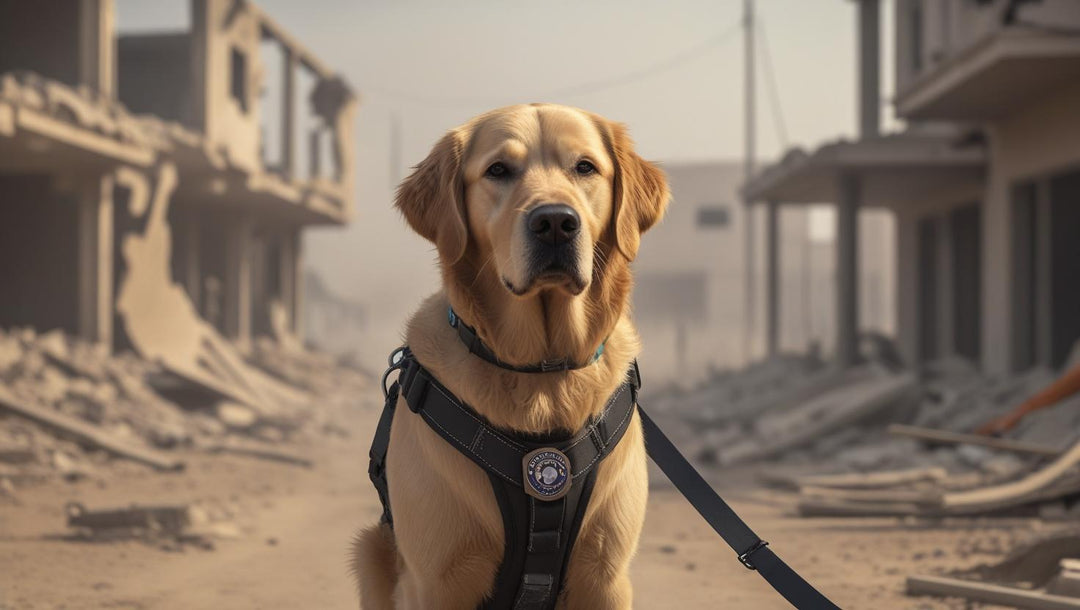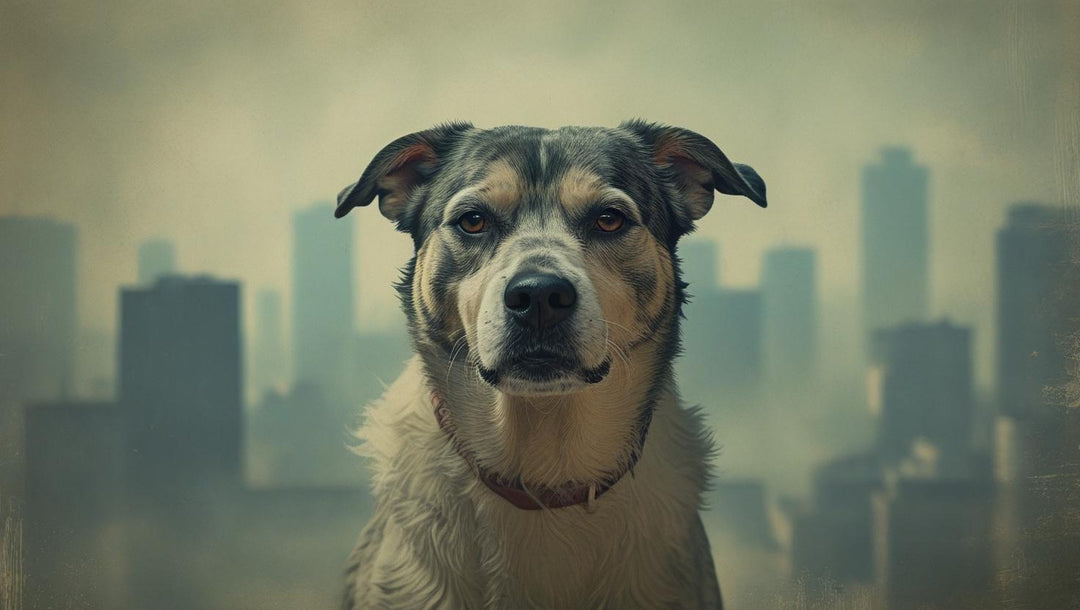Many pet owners are asking questions about the safety of a dog wearing an air filter face mask. Can a dog wear an air filter mask? Is it safe? What are the warnings? What are the benefits? These are important questions with increasing air pollution problems from wildfire smoke, desert dust, volcanic ash, red tide, pollen allergens, and mold from hurricanes.

Are there Air Filter Face Masks for Dogs?
Yes, K9 Mask® launched a Kickstarter campaign in March of 2019 for the first production of air filter masks for dogs. The campaign was fully funded and the first masks were produced in the summer of 2019. All of this happened before the coronavirus pandemic. K9 Mask® by Good Air Team first noticed the need to protect dogs from wildfire smoke in California. After the destruction caused by the Camp and Paradise wildfires in 2018 they knew something had to be done to solve the problem of air pollution affecting pets.
While K9 Mask® is the only dog mask made in the USA there are now others made in China sold primarily on Amazon. K9 Mask® is a superior solution with features that create an effective filter to protect a dog from toxic air. The Chinese versions lack features to keep air pollution from leaking into the backside of the mask, making them worthless at protecting a dog from harmful airborne particles.

What are the Safety Warnings for Dogs Wearing an Air Filter Mask?
There are two major concerns for dogs wearing a mask. First, is "Oxygenation." Second, is "Overheating."
Oxygenation: Is a dog able to breathe through the air filter? Will the dog get enough oxygen through the filter? Does a mask suffocate a dog? These are important questions for the safety of a dog. Dogs need to get enough oxygen to breathe and saturate the blood for proper body function. Using a tool called a 'pulse oximeter' veterinarians are able to test the % amount of oxygen in the blood of a dog. Dogs need higher than 94% of oxygenation in the blood to be healthy. Below this level and the animal is at risk of hypoxia. Hypoxia can cause internal organ disfunction and failure.
For this reason, a dog should only wear an air filter mask for short durations of time. It is also important to maintain visual contact with a dog while it is wearing a mask so that it may be removed immediately if the dog is showing signs of irregular breathing or heaving.
It should be obvious, but a dog should only wear an air filter mask in a crisis situation where the air quality is harmful to a dog's health. Check the Air Quality Index (AQI) in your location to find out the threat level. AQI over 100+, on a scale of 0-500, is when the threat level begins to affect the health of your pet.

Overheating: Dogs must pant to release heat from their body so they do not overheat. Panting is the primary method for dogs to cool themselves when their body temperature increases. Dogs are not able to sweat like a human to cool their body. So, panting is critical for the health of a dog. Will a dog overheat wearing a mask?
At temperatures over 85 degrees Fahrenheit a dog is at risk of overheating. Also, the more active a dog is the higher the internal temperature of the dog will increase. Combine hot temperatures with a dog's increasing internal active temperature and this can create a dangerous situation for a dog. A dog can overheat causing injury or death to a dog. A dog wearing an air filter mask should be used when going outside for short bathroom breaks or casual walks to stretch their legs.
All of the current air filter masks for dogs have an exhale panting valve built into the mask to release panting air from the mask. These one-way valves allow hot panting air to escape from the mask, and then close when the animal is inhaling through the air filter material around the mask. This is one solution for masks to help ensure dogs are able to stay cool while wearing the mask. However, this does not mean a dog is out of danger when wearing an air filter mask. The same warnings apply for overheating that apply for oxygenation.

Dog owners should only allow a dog to wear an air filter mask for short durations of time. Dogs wearing an N95 mask should limit the time in the mask to around 10 minutes before taking it off to check on the animals breathing and temperature. It is also important to maintain visual contact with a dog while it is wearing a mask so that it may be removed immediately if the dog is showing signs of overheating.
Some signs of heatstroke are heavy panting, glazed eyes, a rapid heartbeat, difficulty breathing, excessive thirst, lethargy, fever, dizziness, lack of coordination, profuse salivation, vomiting, a deep red or purple tongue, seizure and unconsciousness. Animals are at particular risk for heat stroke if they are very old, very young, overweight, not conditioned to prolonged exercise, or have heart or respiratory disease.
Move your pet into the shade or an air-conditioned area. Apply ice packs or cold towels to their head, neck and chest or run cool (not cold) water over them. Let them drink small amounts of cool water or lick ice cubes. Take them directly to a veterinarian if you are treating your dog for these symptoms of heatstroke.

It is About Dog Health, Not Dog Harm
These two "O" are important for dog health. Dogs must be properly oxygenated and not overheat. Dogs wearing an air filter face mask have limits.
First, it is for a crisis situation only, like - AQI higher than 100+ in wildfire smoke, blowing desert dust, toxic volcanic ash, chemicals, allergens, mold, and other particulate. Second, it should be worn for short periods of time. Third, a dog owner should always visually monitor their pet while it is wearing the mask. Fourth, greater caution should be used in temperatures greater than 85 degrees. Last, a mask for dogs is about protecting the dog's health from short and long-term health risks associated with airborne disease.
A pet owner should discern the situation in their location and assess the health threats to themself and their pet when deciding to put a mask on their dog.




